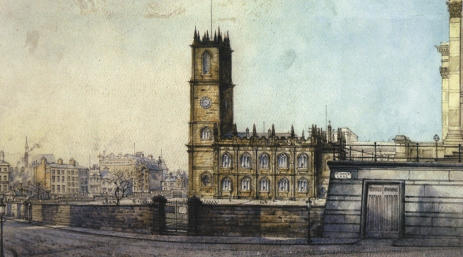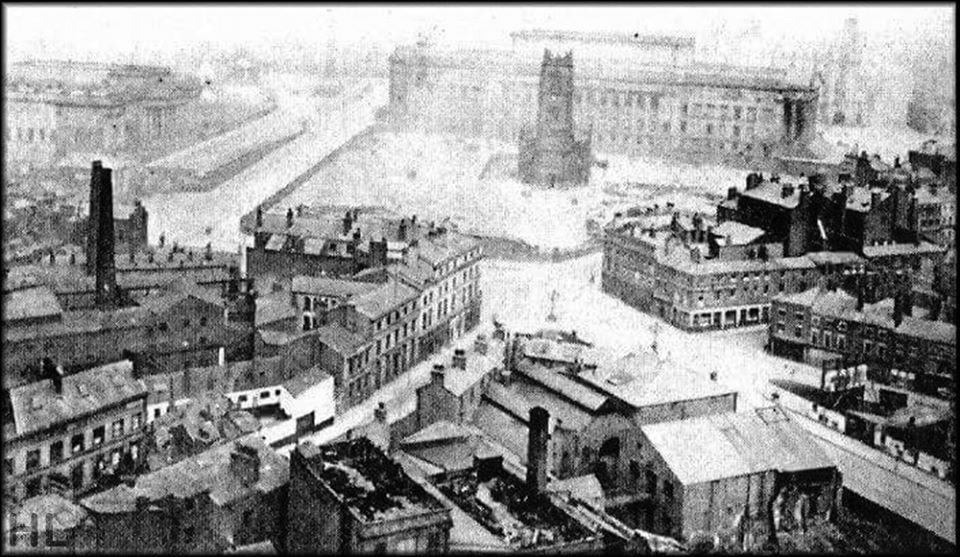Henry Rowland was buried in 1845 in the churchyard of St. John's Church, Old Haymarket which existed from 1767 to 1898.
The following description comes from
the Lancashire On-line Parish Clerks website :
St. John's Church stood against St. George Hall, on the site of what is now St. John's Gardens. The burial ground for the church, with a small chapel, was
consecrated and opened for use in 1767 but the church itself was not completed until 1784. The architect of the church building was Timothy (sometimes given
as Thomas) Lightoler.
In the year it was completed, St John’s served one of the most crowded and poorest areas of the city. Mid-1780’s Burial records indicate the degree of abject
poverty to be found locally. Nearly one-in-two of the deaths that occurred were of children whilst in only one–in-four cases were people able to fund their own, or
a relative’s, funeral. One-in-four burials were of paupers, two-in-three of whom were from the Poorhouse.
St. John's churchyard was closed for burials on 11th June 1865, 82,491 bodies having been interred in the grounds. St. John's Church was closed under the terms
of the Liverpool City Churches Act 1897 The last Sunday service took place in St. John's on 27th March 1898.
When the church was demolished, Peet wrote, 'For more that a century this unsightly structure has been allowed to disfigure the landscape ... as an example of
ecclesiastical art the church of St. John has not a single redeeming feature....'. Under a facility granted on 11th December 1888 Liverpool Corporation was
empowered to lay out the churchyard as the public gardens to be known as St. John's Gardens.
Early Baptismal records contain a number of mentions of people from Africa, Jamaica, New Guinea and other countries. These record possible mariners or,
reflecting that most unsavoury aspect of Liverpool’s past, slaves given English names.
The graveyard and cemetery contained about 27,000 bodies before it was closed in 1854. The closure was due to the extension of St George’s Hall and
surrounding buildings. Parts of these buildings still remain on the old burial ground. Most of the bodies in the churchyard were buried elsewhere.










